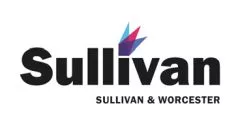Corporate renewable energy purchasing is going mainstream. Originally the focus of a small group of data center operators, big box retailers and other energy-intensive companies, a much broader cross-section of Fortune 1000 companies are now embarking on the path of clean energy procurement.
Company officials charged with accomplishing this mission are justifiably daunted. Many have little experience with clean energy and project finance. An ecosystem of developers, investors and contractors need to be mobilized. A host of company interests with authority over any of a number of financial, accounting, engineering, siting, utility, environmental and regulatory considerations must be conscripted, informed and coordinated to achieve a positive outcome.
Below we discuss seven keys for success.
1. Early and Comprehensive Alternatives Analysis
The clean energy marketplace is rapidly evolving. Optimizing strategy starts with a preliminary "stress test" analysis of the alternatives available to corporations to achieve their sustainability goals. Clean energy procurement options for corporations may include:
- Self-Owned Onsite Generation. Companies that can build or contract for generation facilities on or adjacent to their existing facilities stand to capture the greatest economic and energy value and quickest payback from their project. In states with net metering regimes, "behind the meter" generation will reduce power purchases from the incumbent utility, with excess generation either sold into the grid or credited against the user's future utility bills. Companies often are uncomfortable committing their credit or capital for these projects, and taking on the complexity of constructing, owning and operating energy systems that are not within their core business functions. The lack of sufficient space or inadequate renewable resource availability (such as sun or wind) may further limit this option.
- Third-Party Owned Renewable Projects. Companies can enter into arrangements with third-party project developers who will agree to build, own and operate power projects for the company's benefit. Under these arrangements, the company will enter into a long-term power purchase agreement (PPA) with the third-party developer containing an agreed-upon price or price formula. In exchange, the developer will agree to take on the risks the company wishes to avoid, such as construction risk, cost overruns, delays/completion risks, performance risk and balance sheet risk. A PPA will offer companies stable power prices and act as a hedge against electricity price volatility. However, many companies are not comfortable with committing to 15 or 20 year contractual arrangements. Long-term PPAs also can present accounting issues or gain treatment as "debt equivalents" by credit-rating agencies. Still other companies may have insufficient credit to allow the developer to access reasonable financing, as the developer's banks will look toward the creditworthiness of the offtaker to price their debt and coverage requirements. Finally, a company may have too small an electrical load at any one site to make a PPA arrangement attractive to developer.
- Virtual or Synthetic PPAs. The virtual PPA, otherwise known as a synthetic PPA, has risen in popularity in recent years. Effectively a financial contract, a virtual PPA does not involve the physical delivery of energy to the company. The company instead will continue to receive electricity from its local utility, but enter into a financial agreement with a project developer that has built a renewable project at a desirable location, usually within reasonable proximity to the company's load. Under a typical financial arrangement, the company and the project owner will agree to a fixed (settlement) price associated with the output generated from the renewable facility. The project owner will sell the power from its project into the wholesale markets and receive the market price. The parties then settle the difference between the wholesale market price (LMP) and the agreed-upon fixed price: the project owner will pay the corporation the difference if it receives a price above the benchmark price, and the corporation will pay the project owner when the market price falls below the benchmark price. As part of the deal, the company will receive the renewable energy credits (RECs) associated with the renewable project. A virtual PPA allows a company to meet its sustainability goals through receipt of the project RECs, without having to deal with on-site issues or take on project development risks. The transaction, however, can be complex. The virtual PPA is an imperfect hedge as there likely will not be an exact price correlation between the electricity price received by the project owner and the power price at the corporation's site. The size of the project often is large, requiring the project owner to have multiple counterparties, creating potential intercreditor issues. Tensions may also arise in the event of a default by the project owner between the company's claims against the project and the senior positions of the lender to the project.
- Purchase Renewable Energy from Utilities. Increasingly, utilities are offering corporates a "green tariff," usually at a premium over the grid-cost of electricity. This approach may be seen as the simplest, since the company already has a long-standing relationship with its electric utility. However, these transactions can involve lengthy and numerous contracts, complex negotiations and may entail complicated structures that engender high transaction costs, depending on the state and utility. Utilities that are subject to an RPS may represent that a portion of their inventory is from renewables. The bottom line economics often are not favorable due to the premium pricing.
- Participate in a Community Energy or Net Metering Program. Also known as shared solar or solar gardens, the community solar model involves a developer that builds a large grid-connected solar array that makes its electricity available to multiple customers, referred to as "subscribers." A subscriber will purchase or lease solar panel-equivalents in the array. In states with community solar or virtual net metering programs, the purchaser will often receive credit for the electricity from the garden as if the panels were located on the subscriber's own rooftop. The utility will credit the customer for the kWh produced times its retail utility rate. Excess generation will be "banked" and credited against future company electricity use. Community solar projects have the advantage of improving economic value through optimal siting, economies of scale and reduced financing costs. There is often political value as well in participating in community projects as the model is largely politically driven as a way for regulators to allow a broad socio-economic spectrum to participate in the renewables movement. On the other hand, community solar projects often have long lead times because of the difficulty in lining up a sufficient number of quality subscribers.
- Direct REC Purchases. Companies can directly purchase unbundled renewable energy credits like RECs without having to enter into a PPA or build a renewable energy project. RECs represent the "greenness" of a specified renewable energy project and are sold "unbundled," i.e., separately from the underlying electricity. Ownership of the REC embodies the right to claim the green attributes of the renewable energy project by the entity holding the RECs. RECs thus provide a company the advantage of satisfying its corporate sustainability commitment without having to own or control the physical production of the energy. The disadvantage of simply purchasing RECs is that they do not provide the purchaser with the energy benefits of owning its own on-site generation or entering into a PPA, nor the marketing visibility of having a solar or wind array on or near its site. Corporations sometimes view simply purchasing RECs as an inadequate commitment to decreasing our nation's reliance on fossil fuels and reducing greenhouse gas emissions.
Achieving success in energy finance projects requires more than an innovative financial model. Transaction efficiencies are a key determinant of success. Regulatory and transaction costs for lawyers, bankers and accountants can make or break a project, or even a business model.
Transaction processes should be carefully tailored to match the economics of energy projects and investments. For more information on innovative approaches to achieving transaction efficiencies, please visit: http://go.sandw.com/edge-advisory
To read the full article please click here.
The content of this article is intended to provide a general guide to the subject matter. Specialist advice should be sought about your specific circumstances.



